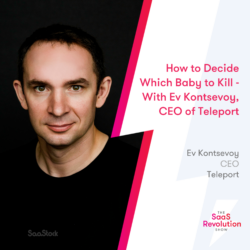Pricing is a critical component of any SaaS (Software as a Service) business strategy. The right pricing model can be the difference between scaling a company and struggling to grow. Given the vast variety of SaaS products on the market, including solutions like CPQ software and eCommerce for manufacturing, it’s essential for companies to align their pricing strategies with customer expectations, product value, and market demand. Choosing the appropriate pricing model requires a deep understanding of your customer base, the value your service delivers, and your overall business goals.
In this article, we’ll explore the different SaaS pricing models, breaking down their pros, cons, and use cases. Whether you’re launching a new SaaS product or reevaluating your current strategy, this guide will offer insights into how different pricing models can affect your revenue streams, customer acquisition, and overall success.
Flat-Rate Pricing Model
The flat-rate pricing model is one of the most straightforward approaches to SaaS pricing. It involves offering your product or service for a single price, with all customers receiving the same features. Flat-rate pricing is simple to understand and communicate, making it ideal for SaaS businesses with a single, core product.
Pros:
- Simplicity: Customers immediately understand what they’re getting, which reduces friction in the buying process. For example, Rankability charges a flat monthly rate for SEO optimization, you can use a similar simple pricing model for your SaaS.
- Predictable Revenue: With flat-rate pricing, businesses can easily forecast revenue since everyone pays the same amount.
- Ease of Management: There are no complicated tiers or variables to track, simplifying the billing system and customer management.
Cons:
- Limited Scalability: A flat-rate pricing model doesn’t account for different levels of user engagement or company size, which can limit your potential to capture additional value from larger customers.
- Missed Revenue Opportunities: Customers who need only a portion of the service may hesitate to purchase a flat-rate plan, while customers willing to pay more for additional features may feel underserved.
Best For:
Flat-rate pricing is most effective for SaaS companies that offer a single product or service with limited variations. If your customer base is relatively uniform in size and needs, this model can work well. Examples include project management tools or small business software that solves a specific problem with a straightforward solution.
Tiered Pricing Model
The tiered pricing model involves offering multiple packages at different price points, each with varying levels of features, functionality, and support. This model allows SaaS companies to cater to different customer segments by offering several options based on user needs and budget.
Pros:
- Flexibility: Customers can choose the tier that best fits their needs and budget, increasing your chances of converting more leads.
- Increased Customer Lifetime Value (CLV): Offering higher-priced tiers with additional features gives you the opportunity to upsell existing customers as they grow or require more functionality.
- Market Segmentation: By structuring your tiers effectively, you can serve multiple customer segments without overcomplicating your product offering.
Cons:
- Complexity: Managing multiple tiers can be complicated, both in terms of development and marketing. It also requires careful consideration to ensure each tier offers sufficient value.
- Analysis Paralysis: Too many choices can overwhelm potential customers, leading to decision fatigue and lower conversion rates if the tiers are not clearly differentiated.
Best For:
The tiered pricing model is ideal for SaaS companies with a diverse customer base that requires different levels of service. For example, CRM platforms or marketing automation tools often use this model to offer basic, advanced, and enterprise packages, depending on customer needs.
Freemium Pricing Model
The freemium pricing model offers a free version of the product with limited features while charging for access to premium features. This model is popular in SaaS because it allows potential customers to try the product without making a financial commitment, increasing the likelihood of conversion.
Pros:
- Customer Acquisition: The low barrier to entry makes it easier to attract a large user base, especially for startups looking to build momentum.
- Upsell Potential: Once users become accustomed to your product and see its value, they are more likely to convert to a paid plan to access premium features.
- Word of Mouth: Freemium users often become advocates, recommending your product to others, further driving acquisition.
Cons:
- Conversion Challenges: Converting free users to paying customers can be difficult, especially if the free version offers too much value. Striking the right balance between free and paid features is crucial.
- Cost of Support: Supporting a large number of free users can become costly, especially if they require technical support.
Best For:
Freemium pricing works well for SaaS companies that have a wide potential user base and can offer a product that provides immediate value with a clear pathway to premium features. Productivity tools, communication platforms, and design software often utilize freemium models to grow their user base.
Usage-Based Pricing Model
Also known as pay-as-you-go, the usage-based pricing model charges customers based on how much they use the product. This model aligns pricing directly with value, which can be a strong selling point for customers who are cautious about committing to a fixed cost.
Pros:
- Aligns Price with Value: Customers pay based on their usage, making it a fair pricing model. This approach is attractive to customers who prefer variable costs over fixed commitments.
- Scalability: As customers’ usage increases, so does your revenue, creating a built-in growth engine as your customers succeed.
- Attracting Small Customers: Startups and small businesses with tight budgets are more likely to try a service that scales with their usage rather than one with a high initial cost.
Cons:
- Unpredictable Revenue: Usage-based pricing can make revenue forecasting difficult since customer usage may vary significantly from month to month.
- Customer Retention: If customers find ways to reduce their usage to save money, this can negatively impact your revenue. Additionally, if usage drops, customers may reconsider the value of the service altogether.
Best For:
This model is ideal for SaaS companies offering services where usage can be easily tracked and quantified, such as cloud storage providers, API services, or communication platforms that charge based on messages or data usage.
Read more about the rise of usage-based pricing and how to implement it.
Per-User Pricing Model
The per-user pricing model is simple: customers are charged based on the number of users accessing the software. This model is common in collaboration and productivity tools where multiple team members need access to the platform.
Pros:
- Predictable Revenue Growth: As customers grow and add more users, your revenue scales accordingly.
- Ease of Understanding: The pricing is transparent and easy to calculate, making it simple for customers to anticipate their costs.
- Encourages Customer Expansion: Customers are more likely to expand their use of the software as their team grows, naturally increasing your revenue.
Cons:
- Discourages Adoption: If the per-user cost is too high, customers may limit the number of team members with access to the software, reducing overall usage and adoption.
- Limits Large Teams: Large companies might find per-user pricing to be prohibitively expensive, leading them to seek out alternatives or negotiate custom pricing.
Best For:
Per-user pricing is well-suited for SaaS companies that cater to teams and organizations where access to the software is a key part of collaboration, such as project management tools, CRM systems, and communication platforms.
Comparison of Key SaaS Pricing Models
Understanding the strengths and weaknesses of various SaaS pricing models is crucial for choosing the right one for your business. Below is a comparison table that highlights key differences between three popular SaaS pricing models: Flat-Rate, Tiered, and Freemium. This table will help clarify which model might be the best fit based on your business needs and customer base.
| Pricing Model | Best For | Key Benefits |
| Flat-Rate Pricing | Simple products with uniform customer needs | Simplicity, predictability, easy management |
| Tiered Pricing | Diverse customer base with varying needs | Flexibility, increased CLV, market segmentation |
| Freemium Pricing | Startups and companies aiming for rapid growth | Low barrier to entry, upsell potential, viral growth opportunities |
This comparison offers a quick overview of how different pricing models serve different business goals. Each model has its advantages, but the right choice ultimately depends on your product, customer base, and growth strategy.
Common Misconceptions About SaaS Pricing Models
SaaS pricing is a critical topic for any company in the space, yet it’s often surrounded by misconceptions and myths that can mislead businesses when choosing the right approach. These misunderstandings can impact pricing decisions, affecting everything from customer acquisition to long-term profitability. To help clarify the landscape, let’s explore five common misconceptions about SaaS pricing models and why they are misleading.
1. Myth: Freemium Pricing Always Leads to Paid Conversions
One of the most pervasive myths is that offering a freemium model guarantees conversions from free to paid plans. While freemium can be an excellent tool for customer acquisition, it does not automatically lead to a high conversion rate. The key to success with freemium is a well-defined balance between the value offered in the free version and the incentives to upgrade to a paid plan.
Why It’s Misleading: Many companies offering a freemium model see low conversion rates because the free tier provides too much value, leaving little incentive for users to upgrade. Additionally, not all users of the free version are potential buyers—some may only ever use the free features, making it essential to design the free tier carefully to encourage upgrades.
2. Myth: Usage-Based Pricing Is Always the Best for Scaling
The idea that usage-based pricing is always the best option for scaling a SaaS business is another common misconception. While usage-based models can align costs with customer value and scale as customers grow, they aren’t always the best option for every business or customer segment.
Why It’s Misleading: Usage-based pricing can lead to unpredictable revenue streams, making financial planning and forecasting more challenging. It can also result in customer churn if users try to minimize their usage to save money, potentially reducing their engagement with the product. For some businesses, other business models like tiered or per-user pricing might offer more stable and predictable growth.
3. Myth: Flat-Rate Pricing Is Too Simplistic for SaaS Businesses
Some believe that flat-rate pricing is too simplistic and limits revenue potential, especially in a world where customization and flexibility are often valued by customers. However, flat-rate pricing can be an effective model for certain SaaS businesses, especially those with a highly focused product offering.
Why It’s Misleading: Flat-rate pricing works well for products that have a uniform value proposition across their user base. For example, small businesses offering specialized solutions with a clear, singular value can benefit from the simplicity and predictability of flat-rate pricing. Moreover, this model simplifies customer decision-making, which can lead to higher conversion rates in markets where complexity can be a barrier to purchase.
4. Myth: Tiered Pricing Should Always Include More Features in Higher Tiers
A common assumption with tiered pricing is that each higher tier should include more features to justify the increased cost. While offering more features in higher-priced tiers can make sense, it’s not the only way to structure a tiered pricing model.
Why It’s Misleading: Tiered pricing can be based on various factors, not just features. Other dimensions such as the level of customer support, access to premium content, or usage limits (e.g., number of users, storage capacity) can also differentiate tiers. Offering different pricing tiers based on these criteria allows businesses to target different segments more effectively without simply adding more features to justify higher costs.
5. Myth: Per-User Pricing Is Ideal for All Team-Oriented Software
Another misconception is that per-user pricing is the default best option for any team-oriented SaaS product. While per-user pricing is commonly used for collaboration tools and software that requires multiple users, it’s not always the ideal model for every business or use case.
Why It’s Misleading: Per-user pricing can discourage widespread adoption within large organizations if the cost per user is too high. Additionally, it can limit the perceived value of the product if potential customers are hesitant to purchase enough seats for their entire team. In some cases, flat-rate or tiered pricing might be more effective in encouraging adoption across larger teams, as it removes the perceived penalty for adding more users.
Conclusion
Choosing the right SaaS pricing model is not a one-size-fits-all decision. It requires a thorough understanding of your market, product, and customers. The flat-rate model offers simplicity and predictability but lacks flexibility. The tiered model provides options for a broad customer base but can be complex to manage. Freemium attracts a large audience but converting free users to paid customers can be a challenge. Usage-based pricing aligns cost with value but can lead to unpredictable revenue, while per-user pricing grows with customer expansion but may deter large organizations.
Ultimately, the key is to choose a pricing model that not only fits your product and market but also positions your company for sustainable growth. Pricing is not static, and as your business evolves, so too might your pricing strategy. Don’t be afraid to test different models and iterate as needed to find the perfect fit for your SaaS business.




